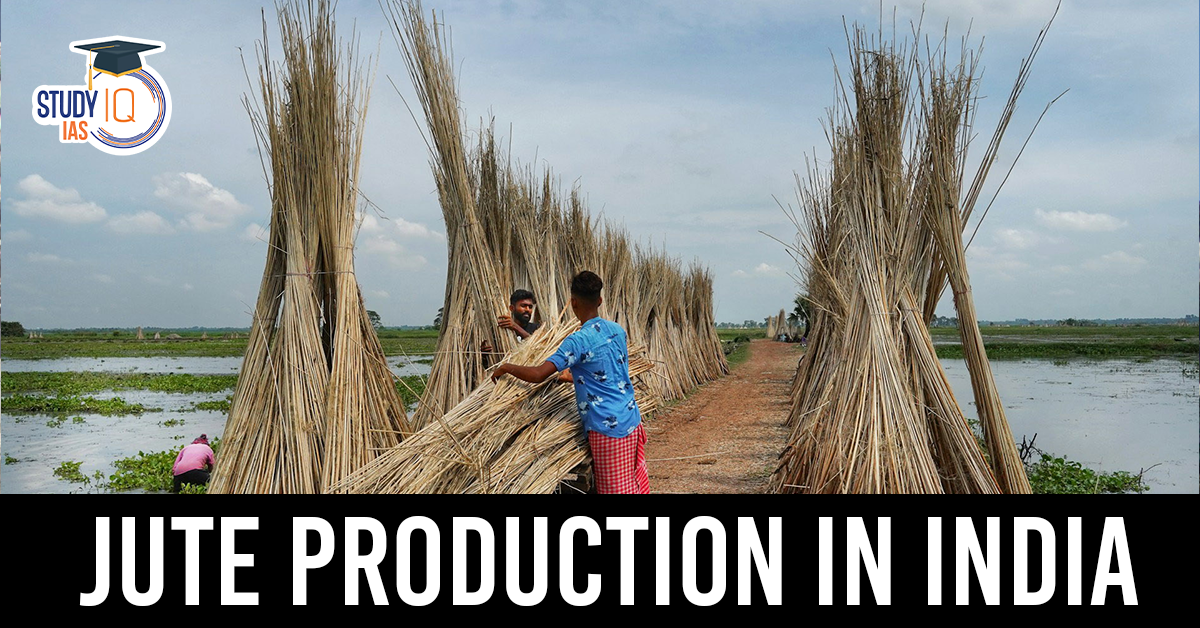Context: The Cabinet Committee on Economic Affairs (CCEA) has fixed the minimum support price (MSP) of raw jute for the 2025-26 marketing season at ₹5,650 a quintal, an increase of ₹315 from last year.
About Jute and its Production
- Jute is a natural fibre with a golden, soft, long, and silky shine.
- It is known as Golden Fibre because of its colours and high cash value.
- The Golden Fibre Revolution in India is related to jute production.
- To promote the jute industry, the government has mandated 100 % food grains and 20 % sugar to be packed in jute bags.
Conditions Required
Grows best in a hot and humid climate
- Temperature: 25-35°C
- Rainfall: 150-250 cm
- Soil Type: Well-drained alluvial soil
Production in India
- Primarily concentrated in 3 states – West Bengal, Bihar & Assam. They produce around 99% of India’s jute.
- Other states: Odisha, Andhra Pradesh, Tripura, Meghalaya, Nagaland.
- Worldwide: India is the largest producer of jute followed by Bangladesh and China.
| National Jute Board (NJB) |
|
| UPSC PYQ |
| Q. The crop is subtropical. A hard frost is injurious to it. It requires at least 210 frost-free days and 50 to 100 centimetres of rainfall for its growth. A light well-drained soil capable of retaining moisture is ideally suited for the cultivation of the crop.
Which one of the following is that crop? (2020) (a) Cotton (b) Jute (c) Sugarcane (d) Tea Answer: A |


 Places in News for UPSC 2026 for Prelims...
Places in News for UPSC 2026 for Prelims...
 Lake Natron: Location, Features, Wildlif...
Lake Natron: Location, Features, Wildlif...
 Erra Matti Dibbalu Added to UNESCO Tenta...
Erra Matti Dibbalu Added to UNESCO Tenta...

























